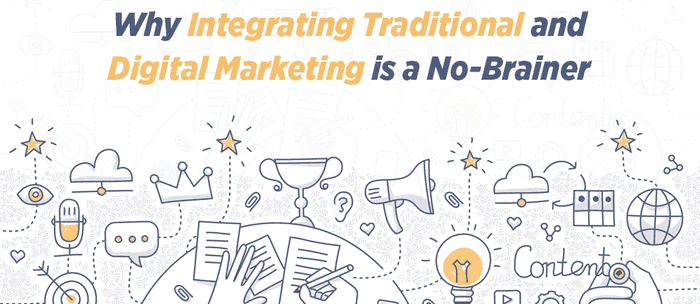The digital age has given us so many things: better ways to stay in touch with loved ones, new ways to market and advertise, a social connectivity that reaches across the world.
Another thing the digital age has been quite generous with? Hyperbole. “Traditional advertising is dead!” “Print is dead!” “Cable TV is dead!” “God is dead!” Oh, wait. That was Nietzche.
Anyway, you get the picture. Once SEO, social media, and influencer marketing came on the scene, lots of people in the position to make loud and definitive proclamations like this did so, and we ended up with a bunch of doomsday-esque predictions that turned out to be a bit exaggerated. I still read books made of paper, and lots of people I know do too. Advertising firms are still alive and thriving. Cable TV shows no sign of fading away, although it has, certainly, adapted.
The point is that no matter how game-changing the digital revolution has been, it’s not the end-all be-all. That’s as true in marketing as it is in any other industry—salespeople, for instance, still make phone calls and face-to-face visits, and retailers still invest in brick-and-mortar stores despite the popularity of online shopping.
The traditional way of doing things has stuck around because it’s worked for a really long time. It’s just that now, we can integrate those “old-fashioned” marketing methods with the latest digital marketing ones.
Integrating Traditional and Digital Marketing Gives You a More Holistic Picture of Your Marketing Strategy
At MZ, as you might already know from our website, we’re big fans of integration. Silos are not our thing—instead, our SEO, social media, content, and other departments work together in order to provide a holistic marketing strategy that will provide strong results across the board for our clients.
That includes using traditional marketing strategies, too. Public relations is a great example: digital PR is huge these days, and magazines with popular online outlets like Forbes, Inc., Wired, and many others wield massive power when it comes to getting the word out about a product or company. Digital PR covers popular bloggers too, to a degree, although nowadays, blogs fall more into the category of influencer marketing.
With digital PR, the focus is still on creating valuable, engaging content. That could be the comments you post in online forums like Quora, the blog posts you write on your own site or for others, or an article you pen for a major online outlet. But because this is online, you’ve also got to make sure that content is optimized for the digital space. You’ve got to take into account social media shareability and SEO, for example—what good is producing great content if no one can find it?
Complementing Digital Efforts with Traditional Gives You Further Reach
Now consider how your digital PR efforts could integrate with traditional PR methods. As mentioned before, print and broadcast outlets are still around, and tons of people still use them. So why not take advantage of their power?
Let’s look at magazines. While some have transitioned to online-only, that’s still the exception rather than the rule. Newsweek, you may remember, made huge news when it announced that it was phasing out its print edition in 2013—only to make huge news again a few months later when it relaunched the print edition, due to demand.
One great aspect of running traditional PR in conjunction with your digital PR is that often, you can get both print or broadcast exposure along with online exposure. If you get an article in Wired’s print edition, there’s a good chance they’ll post some version of it online, too.
Then you can integrate your digital PR efforts with influential online journalists and other writers, pointing them to your recent print or broadcast exposure. With this strategy, you can both widen the reach of the original piece and build on that initial success.
The same is true of your other marketing efforts. Email marketing is just another form of direct marketing (sending out mailers, like fliers or catalogs, directly to the consumer). So if you’ve gotten good results from traditional direct marketing, there’s no reason to put an end to them just because you’re doing email marketing too. You don’t want to bombard customers, of course, but if you can find a good balance, then you should continue using whatever channels have shown success.
Bottom Line: Follow Your Customer
That, in the end, is the important thing: balance. Not all products need to push both traditional and digital campaigns equally. Most people don’t need to feel a strong personal connection, cultivated through social media, with their peanut butter brand. It’s all about figuring out who your customer is, and then going where they are. Are they mostly online or offline? What channels do they use? And how do they best like to receive the marketing messages you’re sending out?
These are essentially the same questions marketers have been asking for decades, since long before the internet came along. By sticking to those original principles, and looking at your marketing strategy holistically, you can get the very best results from both your digital and traditional efforts. That’s our policy, at least—and we think our clients would agree that so far, it’s been pretty successful.
If you’re ready to take your marketing strategy into the future, contact us at MZ. We’d love to discuss our services—both digital and traditional—with you!
Related Post: Who is Your Customer? Your Guide to Creating the Perfect Customer Profile







